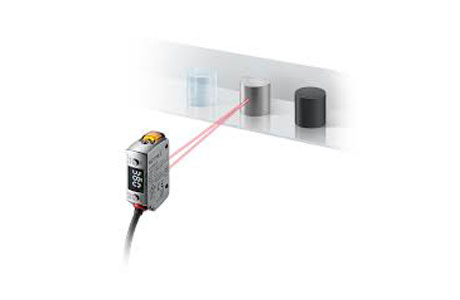Key Takeaway
A photoelectric detector uses light to sense the presence or absence of an object. It has two parts: a light transmitter and a receiver. When the light beam is interrupted or reflected, the receiver detects the change.
This makes photoelectric detectors useful in industrial automation. They are fast, accurate, and reliable, making them essential for tasks like counting objects on conveyor belts or ensuring machinery safety.
How Photoelectric Detectors Differ from Photoelectric Sensors
While photoelectric detectors and photoelectric sensors often seem interchangeable, they serve slightly different purposes. Photoelectric sensors typically refer to devices that not only detect light changes but also output signals used in automation systems. On the other hand, photoelectric detectors focus more on the sensing part—they are more like the eyes of a system. For instance, a sensor may detect an object’s presence and trigger a machine to stop, whereas a detector focuses solely on recognizing the change in light intensity.
Think of it like this: a detector tells the system “something’s there,” while a sensor says “something’s there, now do something about it.” For newly joined engineers in the industry, understanding this difference is key, as it affects how these components fit into larger automation processes.

The Role of Detectors in Light Detection and Ranging Systems
Photoelectric detectors play a crucial role in Light Detection and Ranging (LiDAR) systems, which are used extensively in industrial automation and autonomous vehicles. These detectors help measure distances by emitting laser beams and capturing their reflection. The time taken for the light to return helps calculate distance with pinpoint accuracy. In industrial applications, this means precise positioning, measuring object height, and avoiding collisions in automated machines. Their ability to measure with such accuracy is invaluable in environments where even a small margin of error could cause issues.
For newly joined engineers, understanding the importance of LiDAR systems is key. Without photoelectric detectors, LiDAR systems would lose the precision that industries rely on. The detectors ensure smooth operations by providing fast, accurate, and reliable distance measurements. Mastering their use will make an engineer well-prepared for tasks involving high-tech automated machinery.
Common Applications of Photoelectric Detectors in Industry
Photoelectric detectors are widely used across various industries due to their versatility and precision. On packaging lines, they detect the presence of products on conveyor belts, ensuring that items are correctly placed and processed. In manufacturing, they are essential for quality control by detecting defects or ensuring components are correctly assembled. Their quick and reliable detection makes them a cornerstone in modern industrial operations.
For any engineer starting out, recognizing the adaptability of photoelectric detectors is essential. They are also used in security systems to monitor doorways and gates. When the beam is broken, an alarm is triggered, or a door locks automatically. Their widespread applications in industries prove just how vital they are for ensuring smooth and safe operations, making them indispensable in daily tasks.
Comparing Photoelectric Detectors to Optical Sensors
While both photoelectric detectors and optical sensors use light to detect objects, they function differently and are used in varying scenarios. Photoelectric detectors focus on the interruption or reflection of light to detect objects, which is critical for tasks that require speed and accuracy. In contrast, optical sensors measure properties like color, transparency, or even distance but are often slower in operation and more suited for nuanced detection.
In industrial environments, photoelectric detectors are the preferred choice when fast-moving machinery needs reliable detection. Engineers new to the field should understand this distinction—photoelectric detectors are the go-to for fast detection, while optical sensors are used for more detailed tasks like verifying material transparency. Mastering this knowledge will allow engineers to make better decisions in optimizing processes.
Benefits and Limitations of Photoelectric Detectors
The benefits of using photoelectric detectors in industrial settings are vast. They provide high-speed, reliable detection and can operate in various environments, both clean and dirty. Whether dealing with reflective or opaque objects, these detectors perform well in most industrial applications. Moreover, they are easy to install and maintain, offering a cost-effective solution for engineers looking to optimize their systems.
However, they come with limitations. Ambient light can sometimes interfere with their performance, and transparent objects may require specific calibration to be detected accurately. Understanding these limitations is crucial for new engineers. With proper calibration and setup, most of these issues can be managed, ensuring that photoelectric detectors continue to offer precise and reliable results in industrial applications.
Conclusion
Photoelectric detectors are essential components in modern industrial systems, offering fast, reliable, and accurate detection of objects in various processes. Whether they’re used in manufacturing, packaging, or security systems, their role in ensuring smooth operations cannot be overstated. For any engineer entering the industrial automation field, understanding how these detectors work and how they differ from sensors is vital to making informed decisions when setting up or maintaining automated systems. As industries continue to evolve, so will the applications and importance of photoelectric detectors in driving efficiency and innovation.
